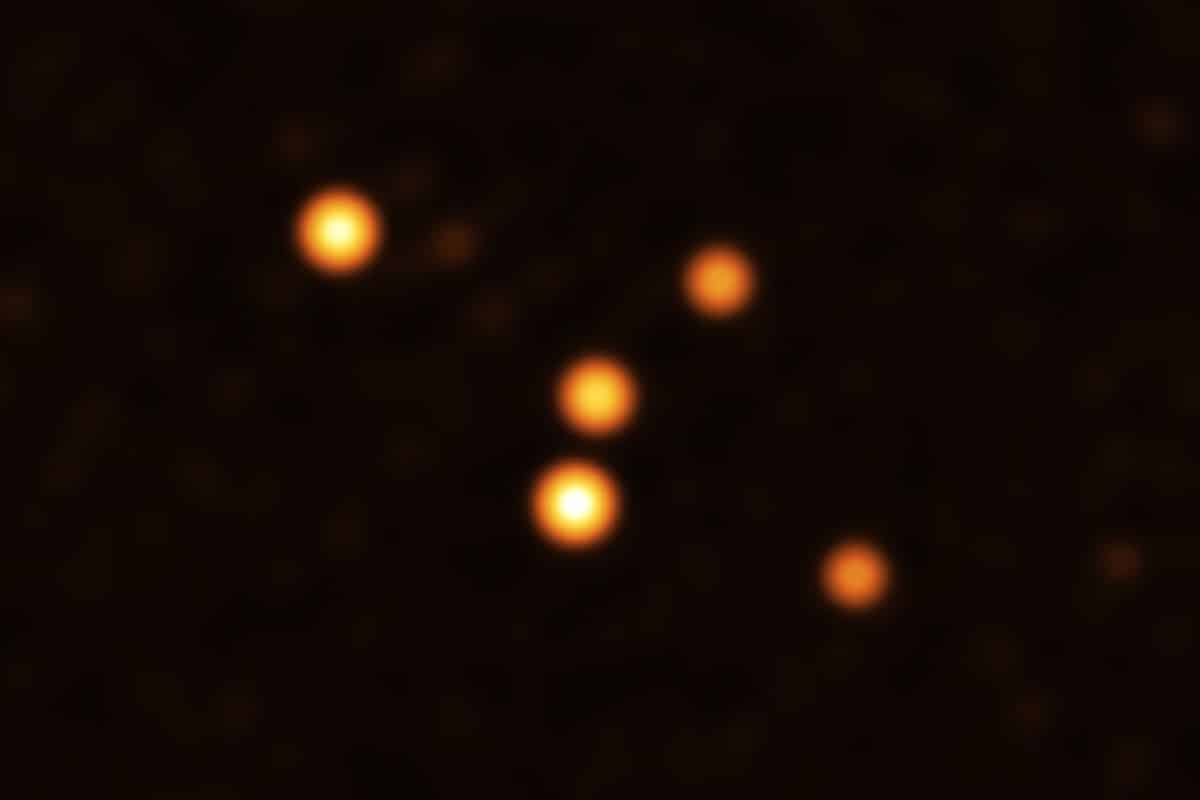
Thanks to the sharpest images ever captured of the dancing stars, we now have a more accurate picture of the mass and distance of Sagittarius A*.
At the heart of our Milky Way is a supermassive black hole: Sagittarius A*. It is a mysterious phenomenon that scientists have quite a few questions about. “How much mass does it have exactly? Does it spin? Do the stars around it behave exactly as we expect from Einstein’s general theory of relativity?” researcher Reinhard Genzel just sums up a few questions.
dancing stars
There is little point in looking at Sagittarius A* himself in pursuit of answers to these questions. The black hole itself is invisible; even light cannot escape the intense gravity of Sagittarius A*. To get a better picture of the black hole, researchers are forced to focus on the stars that revolve around it. These stars have been researched for decades, including by Genzel, who has already won a Nobel Prize for this. And building on that previous research, Genzel and colleagues have now managed to deliver the sharpest images ever captured of the black hole’s environment.
Discoveries
The images provide quite a few new insights. This allows the researchers to use the images to determine more accurately how heavy that invisible black hole is and how far away it is from us. And to top it off, the images also result in the discovery of a previously unseen star dancing around the black hole: S300.
The images were taken using the Very Large Telescope Interferometer (VLTI for short). “The VLTI delivers incredible spatial resolution and the new images allow us to get closer than ever before,” said study researcher Julia Stadler. “We are amazed at the amount of detail, and the action and the number of stars they show around the black hole.”

Above are some stars that orbit very close to Sagittarius A* and were observed between March and July 2021. Image: ESO / GRAVITY collaboration.
S29 and S300
The researchers observed the stars around Sagittarius A* between March and July 2021. One of the stars they tracked as it approached the black hole was S29. It came closest to the black hole in May 2021, passing Sagittarius A* at a distance of just 13 billion kilometers (or 90 times the distance between the sun and Earth). The star had a speed of 8,740 kilometers per second(!). Never before has a star been observed so close to the black hole. Or moving around so fast. Also worth mentioning is, of course, S300: the star that researchers first observed during this study. The discovery of this star shows how powerful their observation method is when it comes to detecting very faint objects in the vicinity of the black hole.
Interferometry
In addition to being powerful, the method is also quite complex. GRAVITY will play a key role in this, an instrument that uses a technique called interferometry to combine light from all four 8.2-metre telescopes on ESO’s Very Large Telescope (VLT). “Ultimately, you get images that are 20 times sharper than those of the individual VLT telescopes and that reveal the secrets of the Milky Way center,” said researcher Frank Eisenhauer.
Fashion model
Then, of course, you also have to be able to interpret the images. To do this, the researchers developed a model of what the stars might look like and simulated how GRAVITY would perceive them. They then compared the results of that simulation with the actual observations of GRAVITY. This approach enabled the researchers to locate and track the stars around the black hole with unprecedented accuracy. “By tracking the narrow orbits of stars around Sagittarius A*, we can accurately measure the gravitational field around the nearest supermassive black hole, test general relativity, and determine the black hole’s properties,” Genzel said.
Mass
For example, based on the new images, the researchers are able to make a very accurate estimate of the black hole’s mass. Because, combined with previously collected data, the observations reveal that the stars follow exactly the route that general relativity predicts for stars dancing around a 4.3 million solar-mass black hole. It is the most accurate estimate of the mass of Sagittarius A* yet, the researchers say. In addition, they were also able to accurately determine the distance to the black hole: it is 27,000 light-years.
And that’s just the prelude to more. Because later this decade, GRAVITY will be updated to what researchers call GRAVITY+ and should be able to detect much fainter stars that are also much closer to the black hole. The goal is to eventually find stars so close to Sagittarius A* that their orbits are affected by the gravitational effects of the black hole’s rotation. Using the Extremely Large Telescope, which is still under construction, it should be possible to measure the velocities of these stars very accurately as well, and eventually get to grips with another interesting feature of Sagittarius A*. “With the combined powers of GRAVITY+ and the ELT, we will be able to determine how fast the black hole is spinning,” Eisenhauer said. “So far, no one has been able to do that.”
Source material:
“Watch the stars move around the supermassive black hole of our Milky Way galaxy” – ESO
Image at the top of this article: ESO / GRAVITY collaboration